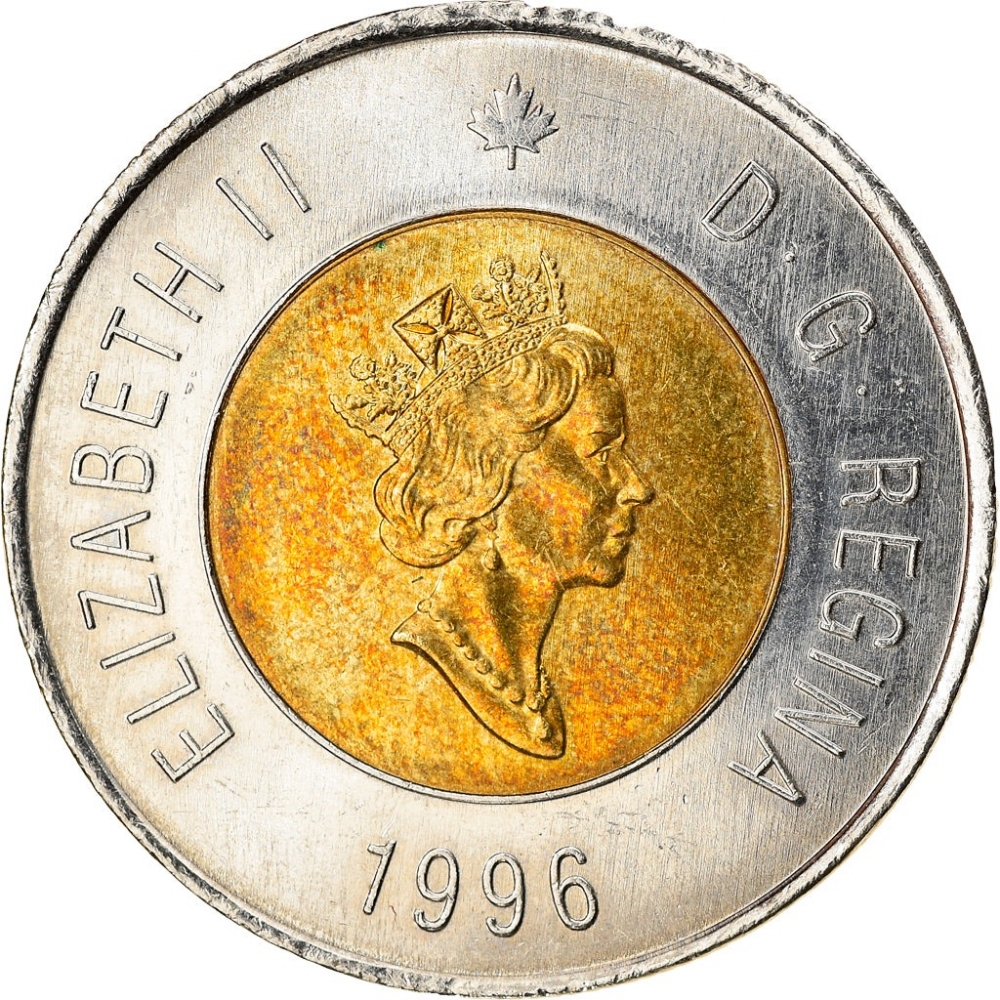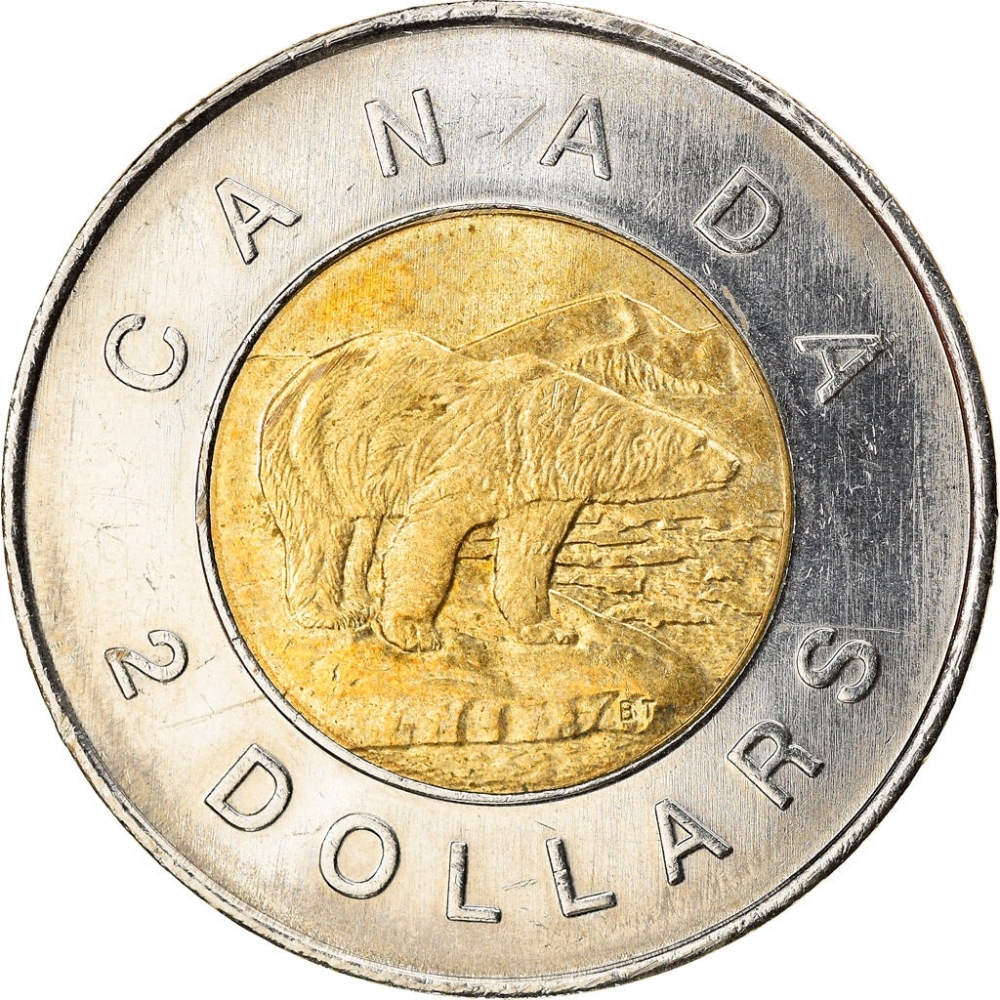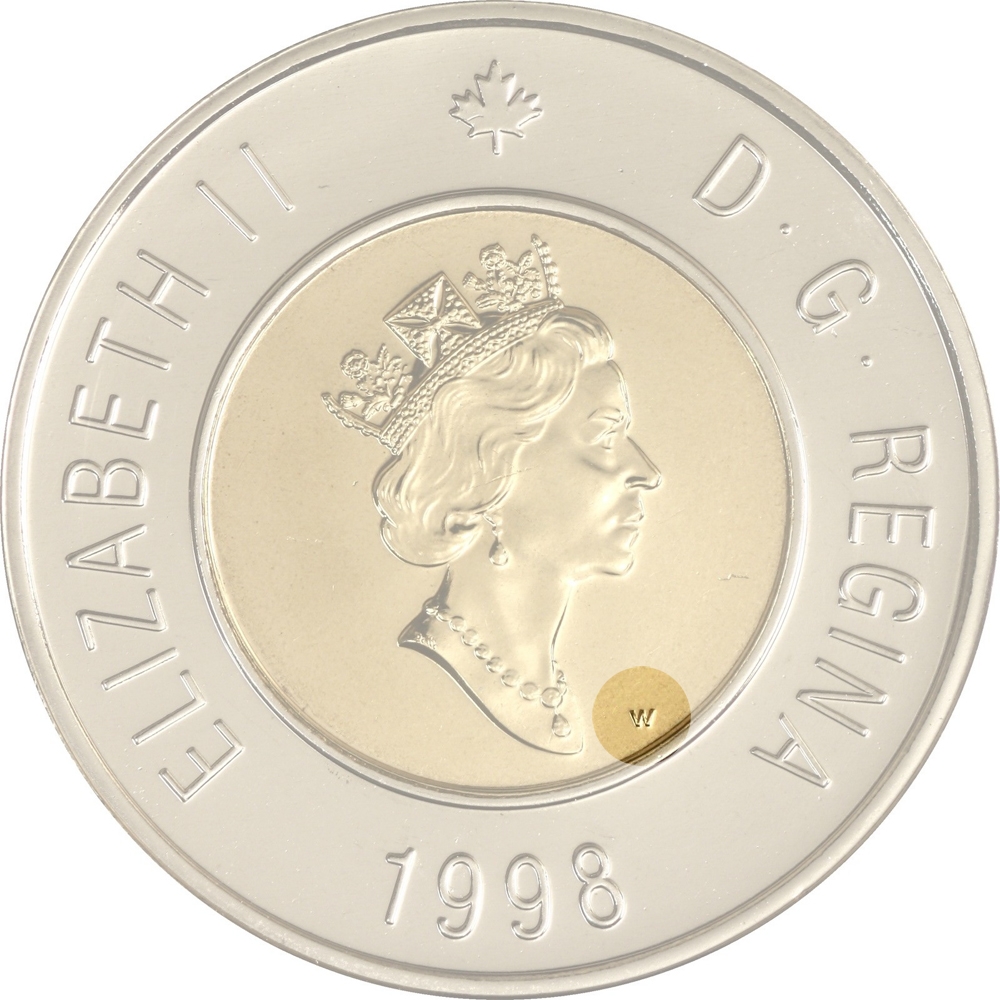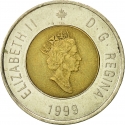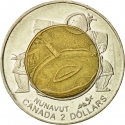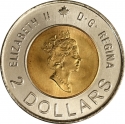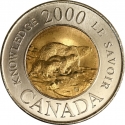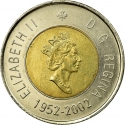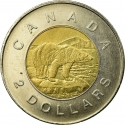You are about to finish your registration. Please check your mailbox (including spam folder). There should be a letter with a confirmation link. Check setting to make sure that your e-mail address is correct.
Send letter againDescription
The Canadian two-dollar coin, commonly called the toonie, is the most valuable of the frequently used Canadian coins. "Toonie" is a portmanteau word combining the number "two" with the name of the loonie, Canada's one-dollar coin.
Сoins from 1998 and 2000 that were manufactured at the Winnipeg branch of the Mint are identified by a small "W" mint mark to the right or left of the Queen's necklace.
Elizabeth II (Elizabeth Alexandra Mary; 1926–2022) was Queen of the United Kingdom and of 14 other Commonwealth realms. Her reign of 70 years and seven months, which began on 6 February 1952, was the longest of any British monarch in history.
When her father died in February 1952, Elizabeth—then 25 years old—became queen regnant of seven independent Commonwealth countries: the United Kingdom, Canada, Australia, New Zealand, South Africa, Pakistan, and Ceylon (Sri Lanka), as well as Head of the Commonwealth. Elizabeth reigned as a constitutional monarch through major political changes such as the Troubles in Northern Ireland, devolution in the United Kingdom, the decolonisation of Africa, and the United Kingdom's accession to the European Communities and withdrawal from the European Union. The number of her realms varied over time as territories have gained independence and some realms have become republics.
Times of personal significance have included the births and marriages of her children, grandchildren, and great grandchildren, her coronation in 1953 and the celebrations of her Silver, Golden, Diamond, and Platinum jubilees in 1977, 2002, 2012, and 2022, respectively.
Obverse

|
Third portrait of HM Queen Elizabeth II, when she was 64 years old, facing right, wearing the George IV State Diadem and surrounded by the inscription. This was the first to be designed by a Canadian, Dora de Pédery-Hunt. The mint mark of the Royal Canadian Mint (Maple Leaf) above. ELIZABETH II D • G • REGINA |
|---|---|
Reverse

|
A polar bear in early summer on an ice floe is surrounded by the facial value and the inscription CANADA. CANADA |
| Edge |
2 Dollars
3rd portrait
KM# 270 Schön# 270
Swap now (1 offer)
Characteristics
| Material | Bi-Metallic |
| Ring | Nickel |
| Center | Aluminium Bronze |
| Weight | 7.3 g |
| Diameter | 28 mm |
| Thickness | 1.8 mm |
| Shape |
|
| Alignment | Medal |
| Mints |
Royal Canadian Mint (Maple Leaf) Royal Canadian Mint (W)
|
Related coins
50th Anniversary of the Accession of Elizabeth II to the Throne
